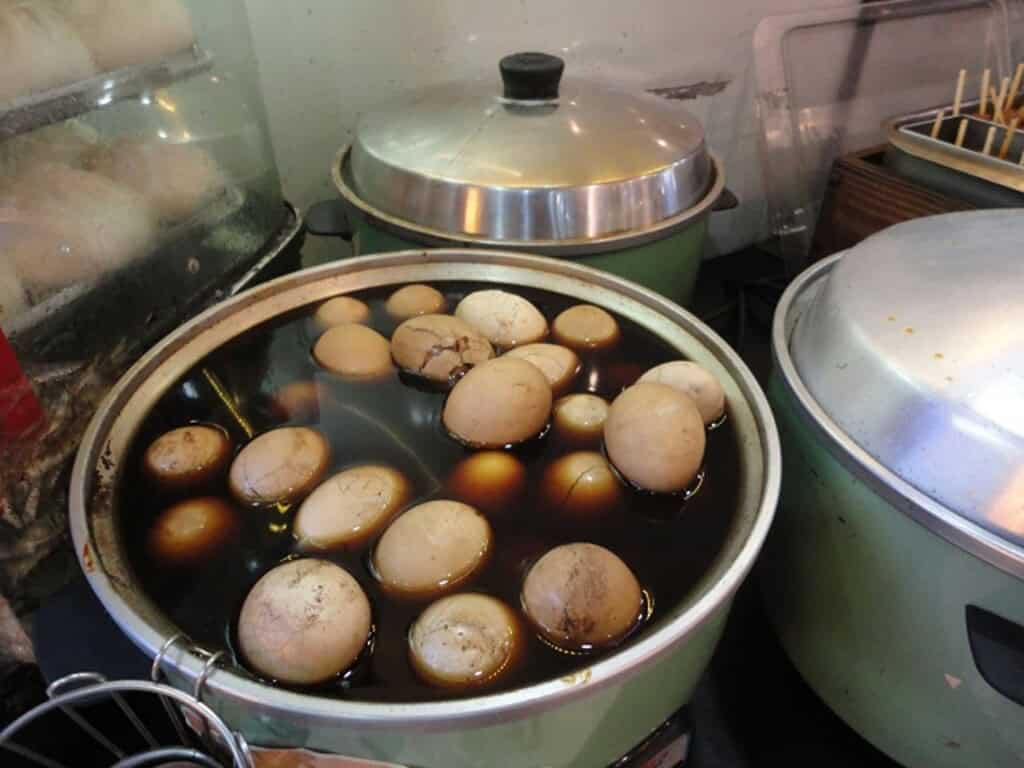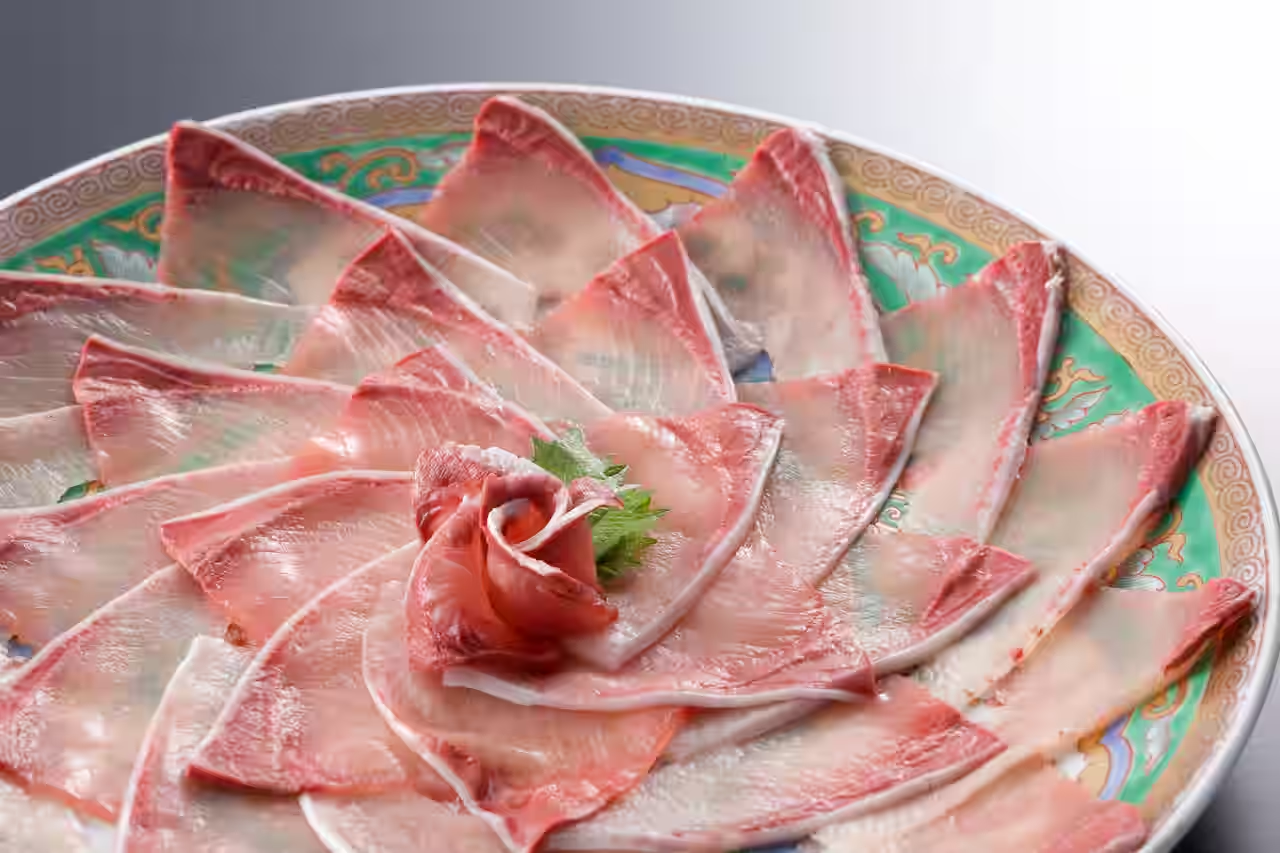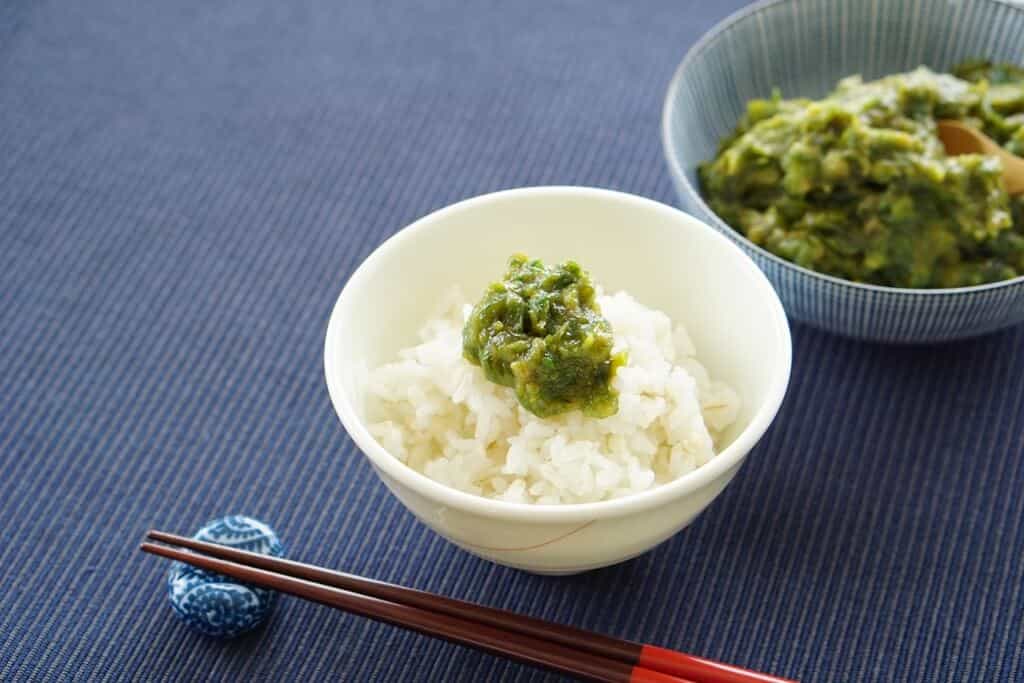The nitamago, a familiar topping on a bowl of ramen, is an absolute delight. Its soft, jammy yolk and savory, dashi-infused egg white create an exquisite harmony that has captivated countless food lovers. Once merely a side dish, the nitamago egg has grown so popular that specialty shops have emerged, and its fame continues to grow. In this article, we’ll explore the charm of nitamago eggs, covering their definition, history, types, recipes, and restaurants famous for them.
What is Nitamago?
Nitamago (煮卵) is a dish made by marinating or simmering a peeled, hard-boiled or soft-boiled egg in a seasoning liquid, typically made from soy sauce, mirin, and dashi. Also known as “Ajitama” (味玉) or “Ajitsuke Tamago” (味付け卵), it is most widely beloved as a topping for ramen.
The cooking method determines whether a nitamago egg has a firm, fully cooked yolk or a creamy, molten texture similar to a soft-boiled egg. The key is the savory seasoning that permeates the egg white, adding a deep, rich flavor that complements the egg’s natural taste beautifully.
The History of Nitamago in Japan

To understand the history of nitamago, we must first examine its predecessor, the boiled egg. Although a ban on meat consumption was issued in Japan during the Asuka period (592–710), eating eggs was not forbidden. The 13th-century collection of tales “Kojidan” mentions nobles bringing boiled eggs and salt to cherry blossom viewing parties, indicating that boiled eggs were already part of Japanese culture. By the Edo period (1603–1868), boiled eggs had become commonplace, inspiring specialty cookbooks like Tamago Hyakuchin (100 Unusual Egg Recipes). Records from that era suggest that a single boiled egg was once more expensive than a bowl of soba noodles.
The origin of the Nitamago we see on ramen today is believed to have roots in Taiwanese noodle dishes. In Taiwan, a dish called “shěntán tà-mī-miàn” features a soy-braised boiled egg on top of noodles, and this is thought to have been adapted into Japanese ramen.
Initially, the eggs in ramen were typically hard-boiled. However, the first to introduce the soft-boiled, or “hanjuku,” nitamago egg as a ramen topping is said to be “Chibakiya” in Kasai, Tokyo. By applying traditional Japanese cooking techniques, they created a soft-boiled marinated egg that quickly became a sensation, spreading to ramen shops all across the country.
How is Nitamago Used?

Without a doubt, the most popular use for a nitamago egg is as a ramen topping. Its mellow flavor adds another layer of richness to the hearty broth and noodles, elevating the entire bowl.
However, the versatility of Nitamago extends far beyond ramen. It is used in a wide variety of dishes:
- As a filling for onigiri (rice balls): A whole or chopped Nitamago makes for a satisfying and flavorful filling.
- On top of donburi (rice bowls): Placed on a bed of rice with chashu pork, it creates a hearty Nitamago donburi.
- In bento boxes: It adds a splash of color and is a perfect item to fill a small space in a lunch box.
- As an appetizer with drinks: It’s delicious enough to be enjoyed on its own as a snack with sake or beer.
- As a topping for salads: Adding it to potato salad gives an extra boost of flavor and texture.
Types of Nitamago

One of the great appeals of Nitamago is the wide variety of flavor profiles. Beyond the classic soy sauce base, many different seasonings and spices can be used to create unique variations.
- Shoyu (Soy Sauce) Flavor: The most traditional style, made with a base of soy sauce, mirin, and sugar.
- Mentsuyu Flavor: An easy method using store-bought Mentsuyu (noodle soup base) for a quick and delicious marinade.
- Shio (Salt) Flavor: A lighter version marinated in a simple salt-based sauce, which allows the natural flavor of the egg to shine.
- Miso Flavor: The rich umami and aroma of miso paste create a deeply flavorful egg.
- Curry Flavor: Seasoned with curry powder and spices for a tantalizing and aromatic twist.
- Spicy Flavor: Using doubanjiang (chili bean paste) or rayu (chili oil) creates a spicy kick perfect for adults.
- Other Variations: The possibilities are endless, with creative marinades using oyster sauce, chicken broth, ponzu, or even ketchup.
Various Nitamago Egg Recipes
One of the best things about a nitamago egg is that it’s easy to make at home. Here are two representative recipes to get you started.

Easy & Basic Nitamago with Mentsuyu
This recipe is perfect for those who want a quick and simple method.
- Ingredients (for 4 eggs):
- 4 eggs
- 50 ml Mentsuyu (3x concentrate)
- 50 ml water
- Instructions:
- Bring a pot of water to a boil. Gently place the eggs (straight from the refrigerator) into the water and cook to your desired doneness (6 minutes for a very runny yolk, 7 minutes for a jammy yolk).
- Once cooked, immediately transfer the eggs to an ice bath. Once completely cool, peel them.
- Place the peeled eggs, Mentsuyu, and water into a plastic bag or airtight container. Squeeze out the air and seal. Turn the bag occasionally to ensure even marinating.
- Let it marinate in the refrigerator for half a day to a full day before serving.
Authentic Golden-Ratio Soy Sauce Nitamago
For those who want to achieve that rich, sweet, and savory flavor found in restaurants.
- Ingredients (for 4 eggs):
- 4 eggs
- 3 tbsp soy sauce
- 3 tbsp mirin
- 1 tbsp sugar
- 1 tbsp sake
- Instructions:
- Make soft-boiled eggs as described in the previous recipe.
- In a small saucepan, combine the soy sauce, mirin, sugar, and sake. Bring to a boil to cook off the alcohol, then remove from heat and let it cool completely.
- Place the peeled eggs in an airtight container with the cooled marinade. Cover the surface with a paper towel to help the marinade coat the eggs evenly.
- Marinate in the refrigerator overnight for a deep, well-developed flavor.
Famous Restaurants for Delicious Nitamago
There are countless restaurants across Japan that pride themselves on their Nitamago egg. Here are a few particularly famous ones.

Chibakiya (Kasai, Tokyo)
Known as the birthplace of the soft-boiled Nitamago, this ramen shop is a must-visit. The elegant flavor of their nitamago egg, created by a chef with a background in Japanese cuisine, is exceptional.
Hanjuku Nitamago Senmonten Kodamaya (Kiba, Tokyo)
This is a specialty shop dedicated entirely to soft-boiled Nitamago. They offer 7-8 varieties at any given time, from the classic soy sauce to unique options like chive sauce and special chili oil.
Strike-ken (Osaka)
A popular ramen shop in the competitive Osaka ramen scene. Their Nitamago egg, with its incredibly rich yolk, has won over legions of ramen fans.

Conclusion
From a beloved addition to a bowl of ramen to a star attraction with its own specialty shops, the nitamago has a long and evolving history. Because the dish is simple, the creator’s dedication shines through in the precise seasoning and cooking time of the yolk. Whether you seek out a famous shop or try making your own unique nitamago egg at home, we hope you enjoy exploring the deep and delicious world of nitamago.
















Comments